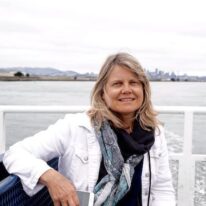Washington’s Burke-Gilman Trail
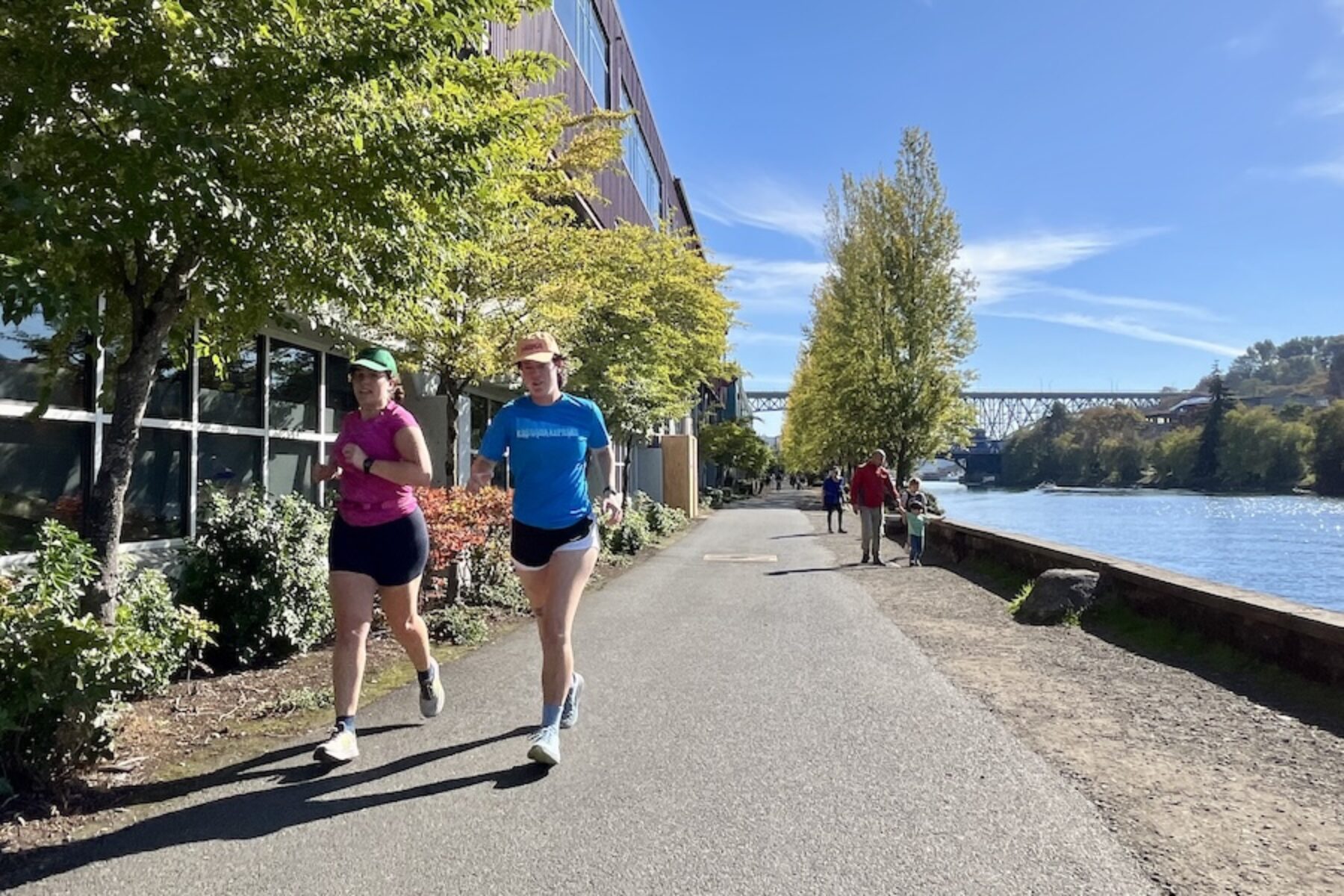
Trail of the Month: November 2024
You would never know by looking at the Burke-Gilman Trail today, bustling with nearly half a million people on it each year, that the popular route was once the site of a controversial campaign that was waged in a time when rail-trails were a novelty. But the nearly 20-mile rail-trail that follows a U-shaped route from Seattle’s Puget Sound neighborhoods in the west to Lake Washington and the growing communities in the northeast, showed cities across the country what was possible.
“I think the Burke-Gilman Trail really is emblematic of how communities can transform and change when trails exist.”
—Vicky Clarke, deputy executive director of the Cascade Bicycle Club
Back in the 1970s, the concept of converting a former railway line into a trail for recreation and commuting was far from mainstream. At the time, Peter Harnik remembers hearing about the concept while working to improve bicycling opportunities in Washington, D.C. Wisconsin’s Elroy-Sparta State Trail was new on the scene, having opened in 1967, but it was located in a rural area, unlike the urban environment of the nation’s capital. Then the Burke-Gilman Trail came along, helping to “show the way” for similar trails in urban settings, as Harnik wrote in his book, “Rails to Trails: The Making of America’s Active Transportation Network.”
“The Burke-Gilman was one of the factors that got me into the rails-to-trails movement,” said Harnik, who went on to cofound Rails to Trails Conservancy—along with David Burwell—in 1986. “It was tremendously influential in other people trying to copy it and make similar trails happen in their parts of the country.”
Genesis of a Movement
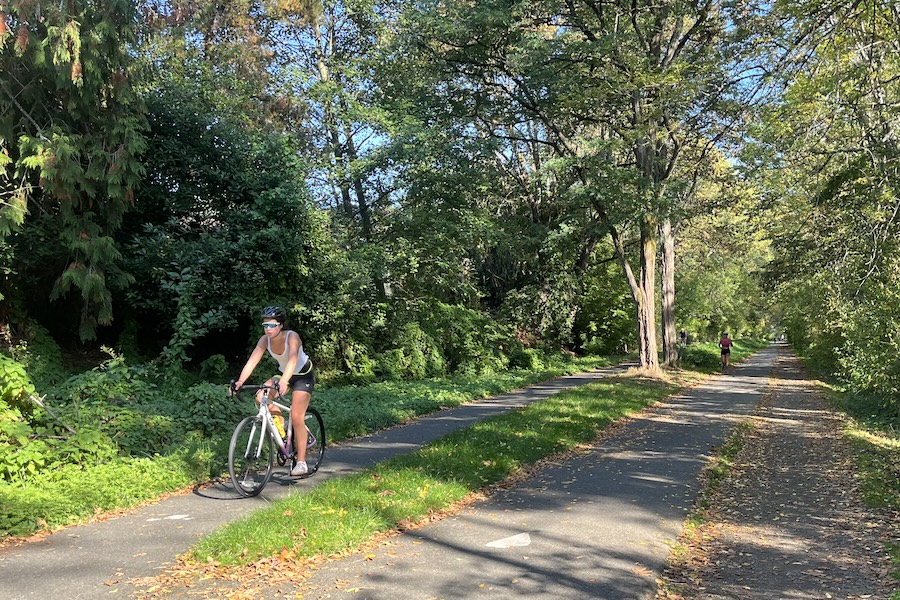
The trail, which officially opened in 1978, follows the route of the old Seattle, Lakeshore and Eastern Railroad, a line that began in the 1880s and once carried coal, iron and timber from the Cascade Mountains. Among the early creators of the railroad were Judge Thomas Burke and businessman Daniel Gilman, hence the Burke-Gilman name.
Sandy Wood, one of the original organizers for the Burke-Gilman Trail, remembers setting out with a group of other young parents in 1970 to preserve the rail corridor that ran past their homes in Matthews Beach, a Seattle neighborhood located northeast of the University of Washington.
Even before the railroad stopped its then-infrequent runs, Wood said, local families were using the line as an informal trail route. When they heard that Burlington Northern planned to abandon the rail line altogether, the group delved into what turned out to be a years-long effort to preserve the route and create the first 12 miles of the rail-trail, which ran from Gas Works Park on Seattle’s Lake Union northeast to Tracy Owen Station in Kenmore.
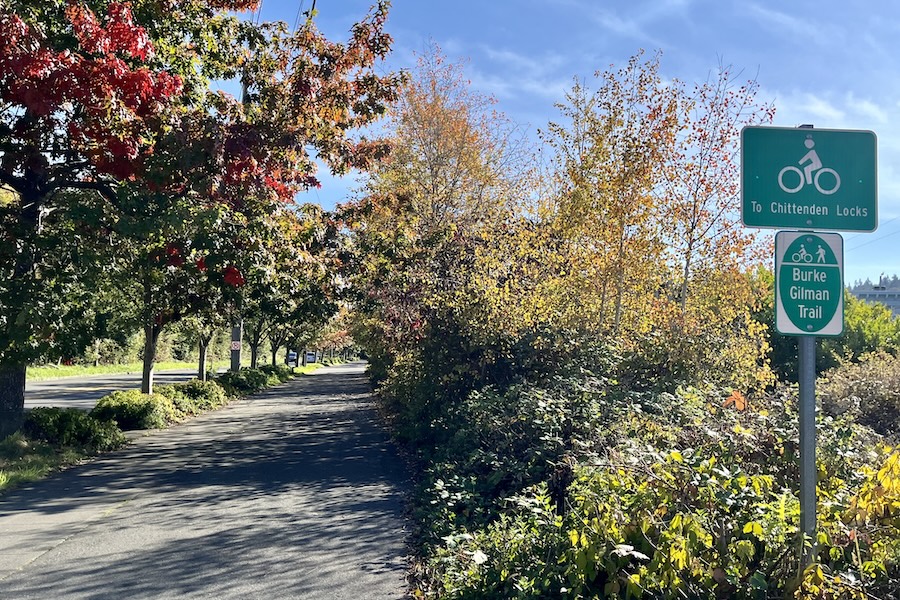
Along the way, the group advocated for the necessary legal actions, dealt with opposition from various interests and participated in huge public rallies to mobilize support for the project. “I definitely have a feeling of pride,” said Wood, who, now in her 80s, still lives in the neighborhood. “My husband and I bicycled to work on it for years. The trail has had tremendous popularity, and it’s a gem of a real estate asset.”
Paul Tolmé, media relations manager for Cascade Bicycle Club—another group involved in the trail’s early development—said he appreciates the significant place the Burke-Gilman holds in rail-trail history as he makes his daily bicycle commute to work on the trail.
“It really was the genesis of this wonderful movement that led to rail-trails across the country,” Tolmé said.
‘One of the Most Beloved Trails We Have’
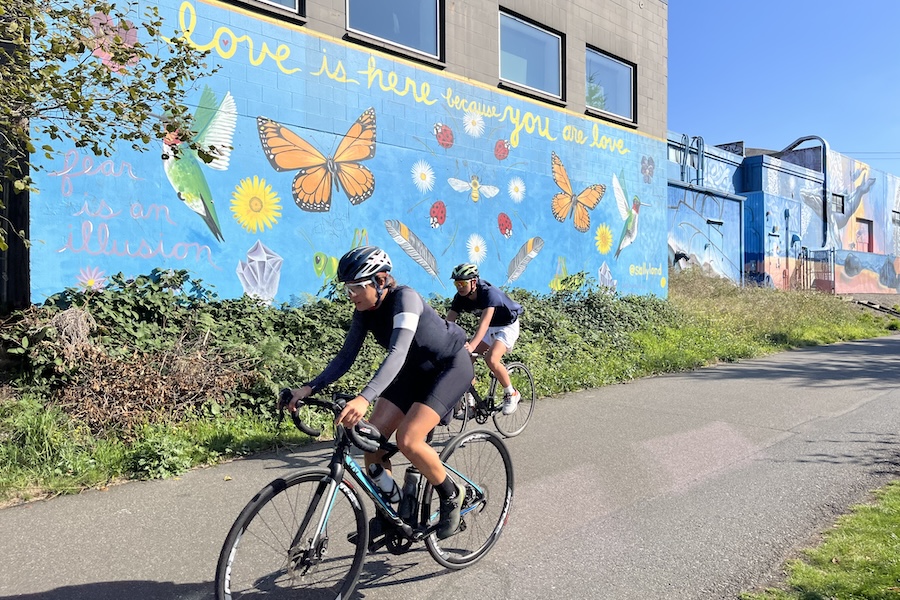
Gabriel Avila-Mooney, special projects program manager for the King County Department of Natural Resources and Parks, noted that while the idea of the Burke-Gilman Trail was met with some opposition 50 years ago, that is in stark contrast to the scenario today.
“What I know of the Burke-Gilman and its initial construction as a rail-trail was that there was a lot of push-back from the surrounding community,” Avila-Mooney said. “But now, it’s one of the most beloved trails we have; it’s one of the most widely used trails we have.”
Regardless of the season or day of the week, the Burke-Gilman pulses with activity. The most recent trail-usage numbers from 2019 show that 453,000 people used the trail that year, and monthly usage ranged from 26,000 people in the chilly winter months to 60,000 people in the peak summer months.
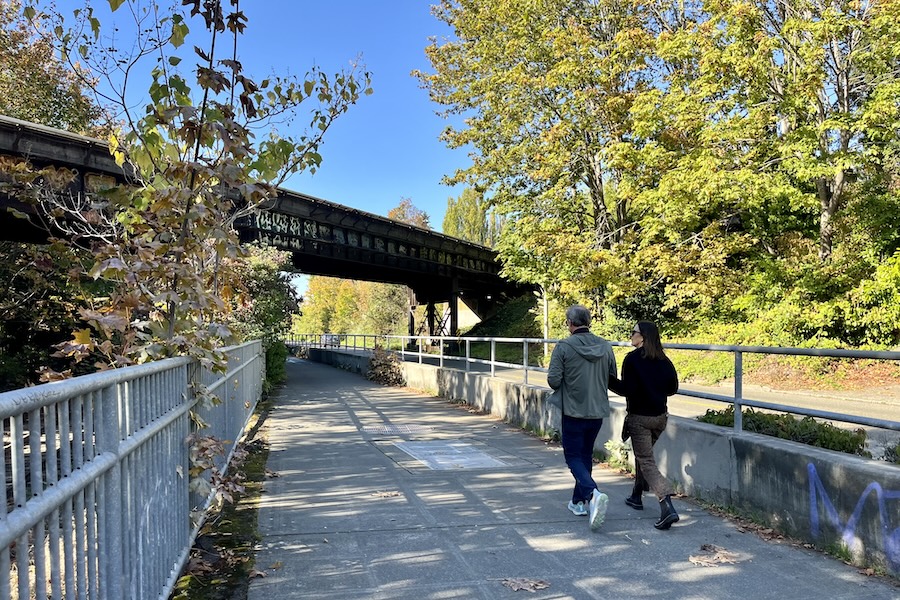
The number of key destinations the trail connects is no doubt a factor in the trail’s popularity. In the west, the Burke-Gilman starts at the Golden Gardens Park area, where trail users have expansive views of the blue waters of Puget Sound and pass by Shilshole Marina Pier. The trail continues through neighborhoods to the south until it reaches historical downtown Ballard with its numerous shops, cafés and museums.
From there, the trail encounters a 1.3-mile gap that is known as the “missing link”—a stretch that trail advocates have been working to complete for decades—where the route transitions from a separated trail to an on-road section. The route returns to trail just before the community of Fremont, which features views of the beautiful Fremont Canal that connects Puget Sound to Lake Union. There, the trail passes through the lively Fremont downtown, where a market takes place on Sundays, bringing throngs of shoppers and riders to the area.
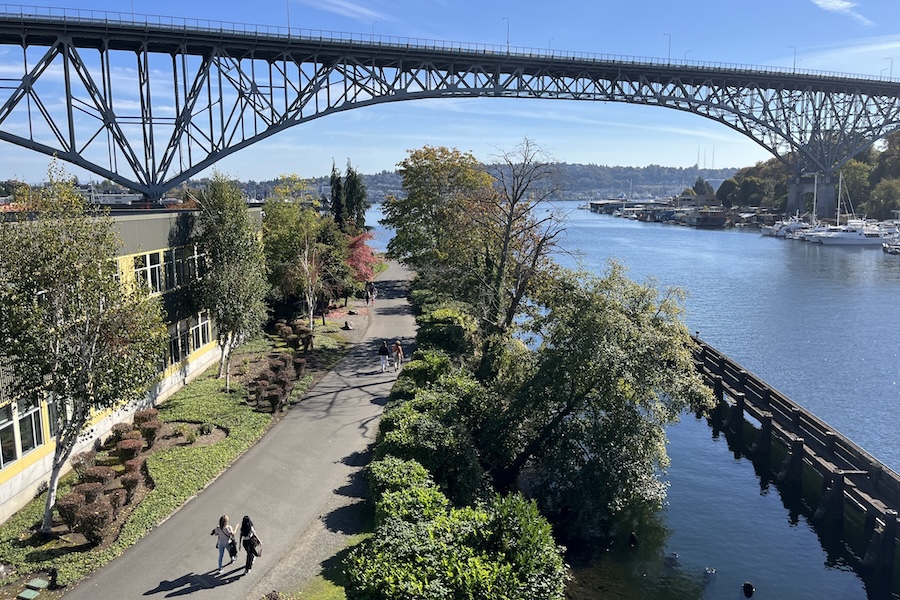
After passing by a series of scenic bridges, the trail continues toward the University of Washington, where it cuts through the campus, passing close by the massive Husky Stadium and the picturesque Drumheller Fountain. Here, the trail offers easy access to the Link light rail’s University of Washington Station, which connects with multiple Seattle-area stops including downtown Seattle and the Seattle-Tacoma International Airport.
After passing through a tree-lined section that shows the changing colors of the seasons, the trail continues toward Lake Washington, the large lakeside Magnuson Park and the communities of Lake Forest Park, Kenmore and Bothell.
“It has different personalities in different places,” said Vicky Clarke, deputy executive director of the Cascade Bicycle Club, noting that some sections are fronted by apartments and businesses, while another section runs through the University of Washington, where “it’s lovely to see so many students out there exercising or walking and talking with their peers.” She also characterizes some areas of the trail as “suburban-esque” and others as a “bike super-highway.”
Making Connections
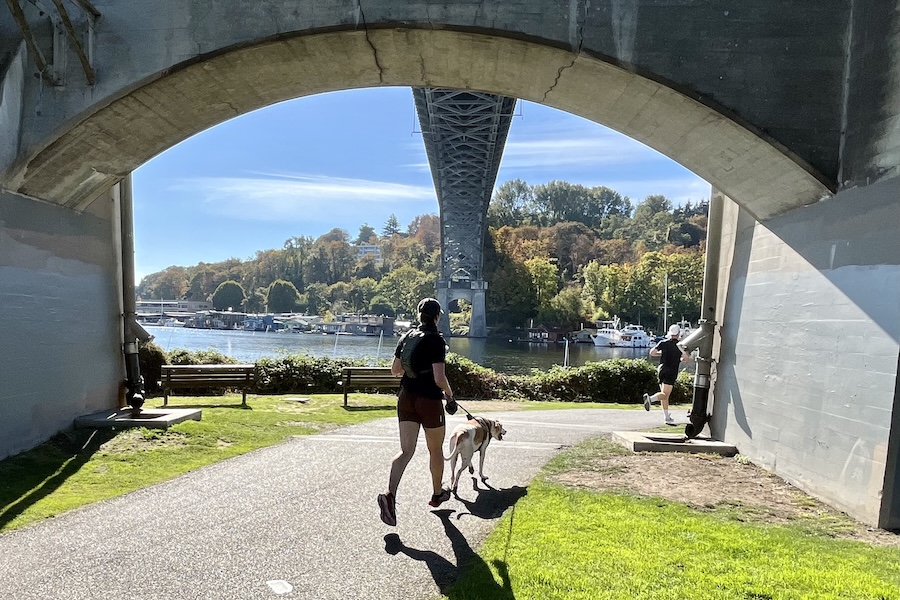
After decades of use, the Burke-Gilman Trail is firmly integrated into the community and now connects to other trails that further its reach and importance, including the Elliott Bay Trail and Sammamish River Trail. Clarke and Tolmé also point out that numerous other trails are in the works that will add to the already extensive connectivity of the Seattle region. For instance, the new 42-mile Eastrail, which is partially complete, will add even more connections between the eastside communities and the Seattle area.
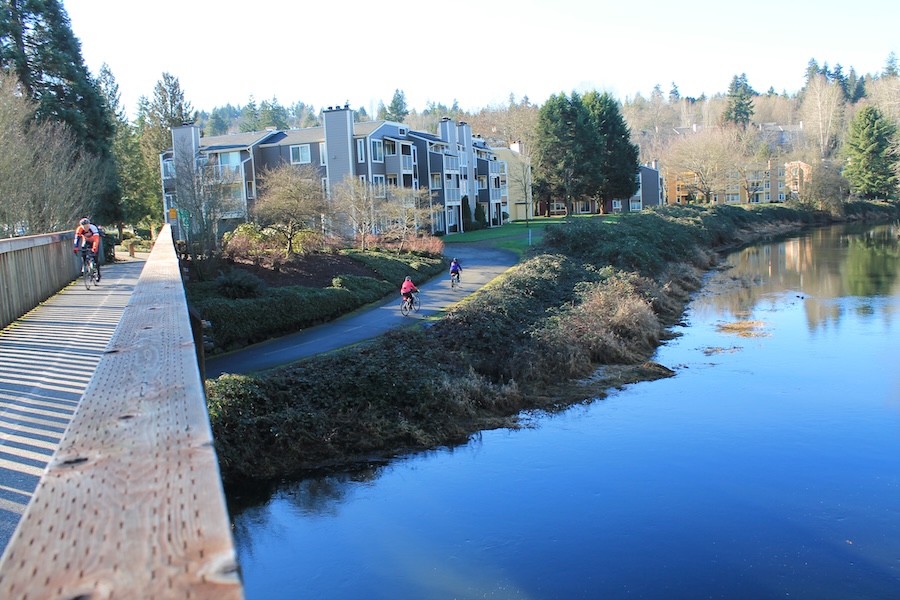
For the past eight years, Avila-Mooney has been involved in King County’s Bike Everywhere Day event, setting up a tent at the Log Boom Park in Kenmore to interact with cyclists and walkers. “We talk with folks, and there are people coming from as far south as Renton, and there are folks coming from Bellevue, Kirkland and Redmond that are all commuting on the Sammamish River Trail and the Burke-Gilman Trail into Seattle,” he said.
Through the Leafline Trails Coalition, “We have this vision of 900 miles of connected trail, and we’re about 56% complete,” explained Clarke about the growing trail network across the Central Puget Sound region. “At this point, the easy part is over. We have some really tough parts of the network now, like a bridge over a highway.”
The Burke-Gilman is also a part of the Great American Rail-Trail®, a 3,700-mile route connecting Washington, D.C., and Washington State. “I think we’ve been building [the Great American Rail-Trail] for a long time without really calling it that,” she said. “There are many well-established pieces of the Great American Rail-Trail all across the U.S., and Burke-Gilman is one of them.”
One tough section that still exists on the Burke-Gilman Trail is the “missing link” in Ballard. Although Clarke and Tolmé note that most people in the community want to see the gap closed, legal issues over freight interests have tied up the efforts. Currently, Clarke said, there is no projected date for completion of the missing link. Even so, she and other advocates see the Burke-Gilman Trail as the epitome of a successful rail-trail, and, in 2008, it was inducted into Rails to Trails Conservancy’s Hall of Fame.
“When I think of the Burke-Gilman, it’s really about what trails can be for people and communities,” Clarke said. “Since it has been around for so long, I think the Burke-Gilman Trail really is emblematic of how communities can transform and change when trails exist.”
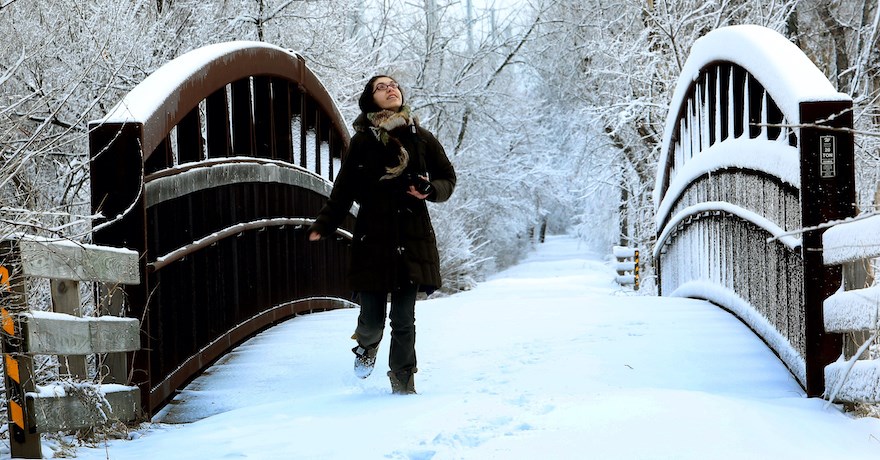
Related Links
Trail Facts
Name: Burke-Gilman Trail
Used railroad corridor: The trail follows the route of the former Seattle, Lake Shore and Eastern Railway, which dates back to 1885.
Trail website: King County’s Burke-Gilman Trail page
Length: 19.7 miles
County: King
Start point/end point: The Burke-Gilman Trail runs between Golden Gardens Park on its western end (8498 Seaview PI NW, Seattle) and Blyth Park in the northeast (16950 W. Riverside Drive, Bothell).
Surface type: Asphalt (Portions of the trail also include a soft, dirt shoulder.)
Grade: The trail is relatively flat for its entire route and is ADA accessible.
Uses: Walking, bicycling and inline skating; wheelchair accessible
Difficulty: The trail is relatively flat and rated as easy with a paved, off-road facility over its entire length (with the exception of a 1.3-mile on-road segment in Ballard).
Getting there: The closest airport is the Seattle-Tacoma International Airport, located about 21 miles from the west end of the trail, and about 29 miles from the east end of the trail. Easy access to the trail is available on the Link Light Rail, which runs from the airport to numerous stops, including the University of Washington Station, which has direct access to the Burke-Gilman Trail on its upper level. Amtrak train service is available at the King Street Station, located about 10 miles from the western end of the trail, 21 miles from the eastern end, or about one block from the International District/Chinatown Link Light Rail Station.
Access and parking: The Burke Gilman Trail passes through Ballard, Fremont, Wallingford, the University District and View Ridge within the City of Seattle, as well as the cities of Lake Forest Park, Kenmore and Bothell. Numerous access points are available along the trail, with major locations at Gas Works Park and Matthews Beach Park in Seattle, and Log Boom Park in Kenmore. Access is also available at Magnuson Park along Lake Washington and Golden Gardens Park along the Puget Sound.
Rentals: The Cascade Bicycle Club, a bicycling nonprofit organization, provides a comprehensive list of bike rental options for the Burke-Gilman Trail at Cascade.org. Dockless bike share and scooter share options are also available along the trail, with information available at Seattle.gov.

Donate
Everyone deserves access to safe ways to walk, bike, and be active outdoors.
